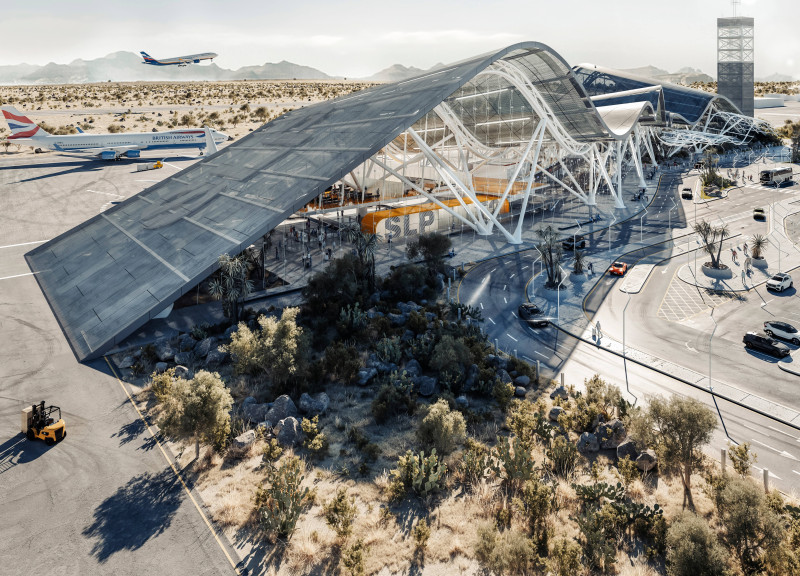5 key facts about this project
Upon entering the project, one is greeted by an open floor plan that facilitates an inviting flow of space. This organization enhances the usability of the interior, catering to both individual and communal activities. The circulation patterns within the architecture are designed to encourage movement and interaction among occupants, enabled by strategically placed pathways and clear sightlines. Such design choices not only create functional spaces but also foster social connections, reinforcing the project's role as a public or collaborative space.
A key element of the design is the careful selection of materials, which have been chosen for both their aesthetic qualities and their sustainability credentials. The project prominently features materials such as exposed concrete, timber cladding, and glass, each contributing to a cohesive visual and tactile landscape. The use of exposed concrete imparts a sense of durability and modernity, while the timber cladding introduces warmth and a connection to nature. The expansive glass panels featured throughout the design allow natural light to penetrate deep into the spaces, promoting a sense of transparency and openness that is vital to the contemporary architectural experience. This commitment to materiality reflects a broader trend in architecture that values eco-friendly solutions without sacrificing design integrity.
The integration of green spaces is another noteworthy aspect of the project, with the architectural design incorporating landscaped areas that serve both aesthetic and environmental purposes. These green spaces not only enhance the visual appeal of the architecture but also improve air quality and provide habitats for local wildlife. The incorporation of these elements highlights the project's commitment to sustainability, echoing contemporary architectural trends that prioritize ecological responsibility.
The facade of the building, characterized by a rhythmic interplay of solid and void, demonstrates a keen attention to detail. The structure features a series of overhangs and recessed balconies that provide shade and promote outdoor living, thereby expanding the usable area and enhancing the overall architectural expression. This feature is particularly significant in climates where solar gain can impact interior comfort, representing a thoughtful approach to passive design strategies.
In terms of functionality, the project adeptly balances public and private spaces, accommodating various activities and user groups. The inclusion of flexible spaces that can easily adapt to different uses speaks to the foresight in the design, allowing the architecture to remain relevant and effective as community needs evolve. This adaptability is a hallmark of successful design, demonstrating a sensitivity to the changing dynamics of how spaces are utilized.
The overall architectural concept behind the project is rooted in the idea of connectivity—not only among users but also between the built environment and its natural surroundings. By promoting this dialogue, the design fosters a sense of place that is both unique and accessible. The emphasis on community-oriented spaces encourages engagement and collaboration, making the architecture a vital asset to its locality.
This project encapsulates a holistic approach to architecture that prioritizes functionality, sustainability, and aesthetic integrity. Every detail, from the choice of materials to the layout and landscaping, has been meticulously considered to create a cohesive and engaging environment. For those interested in a deeper understanding of the intricate details that define this architectural endeavor, it is worthwhile to explore the architectural plans, sections, and designs that reveal the comprehensive thought process behind the project. Engaging with these elements can provide valuable insights into the innovative ideas and solutions that characterize this distinct architectural achievement.


 Luis Ivan Guerrero Villa,
Luis Ivan Guerrero Villa,  Emmanuel Javier Trinidad Sandoval
Emmanuel Javier Trinidad Sandoval 




















